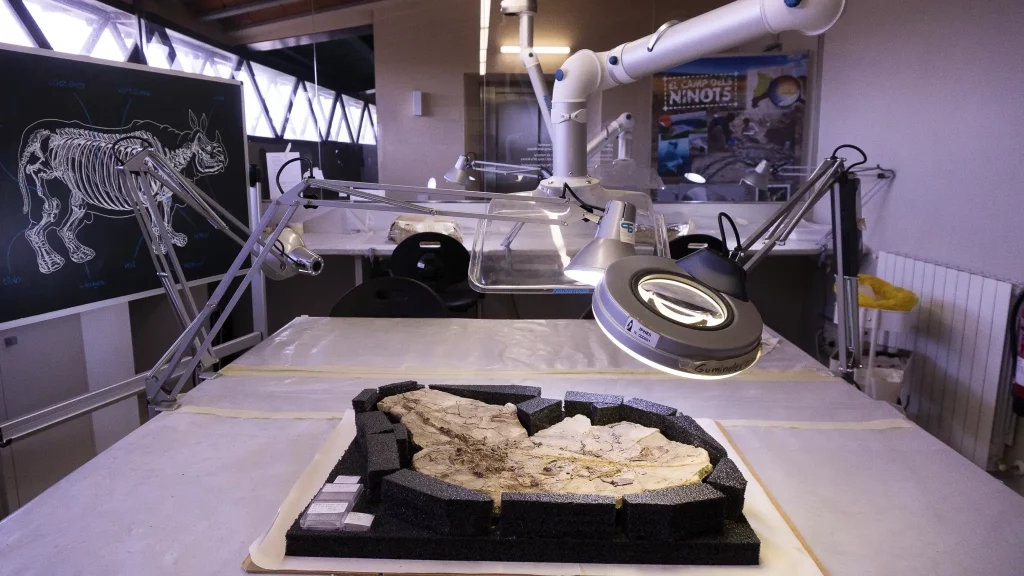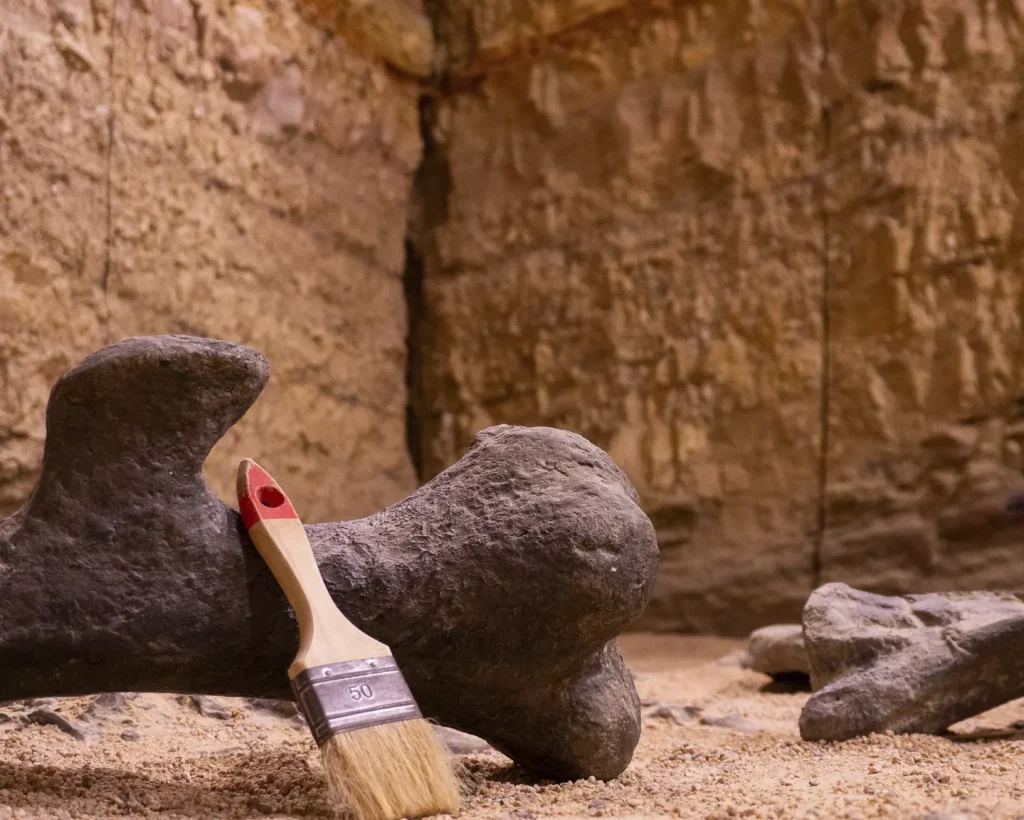It is a space dedicated to support and research related to the Camp dels Ninots site. In this sense, this area is conceived as a space where the visitor is transported to a real research environment, where they can visit the restoration laboratory of paleontological material in situ.

The Camp dels Ninots site, located at the western end of Caldes de Malavella, is a real treasure for international palaeontology. The scientific work, which began in 2003, has made it possible to recover abundant fossil remains of vertebrate animals (birds, fish, amphibians, reptiles, mammals, etc.) and some remains of invertebrates, as well as remains of flora ( leaves, trunks, pollen, etc.), which allow us to reconstruct what this environment was like 3.1 million years ago.
The name of the site refers to the menilitic opal (SiO2nH2O), a type of mineral, present in Caldes, which, when formed, generates curious, curled shapes, popularly known by the inhabitants of Caldes as “ninots”.
The site is located in an ancient volcano, in crater of which, when the volcanic activity ceased, a lake was formed. Around this lake the optimal conditions were given for life to exist, and an ecosystem characteristic of subtropical climates developed there, with an environment dominated by the exuberance of animals and plants.

Some of these animals died in or around the lake, and, after remaining submerged in the water, ended up at the bottom of the lake, where, over time, they were covered by clay. This process is the same as the plants (trunks, leaves, fruits, etc.) and the rest of the recovered material, both organic and inorganic.
Over time, these clays have become a great archive of information, with which researchers work to uncover the treasures that were trapped in them.
Since 2003, an archaeological campaign has been carried out every year led by researchers Bruno Gómez and Gerard Campeny from the IPHES (Institute of Human Palaeontology and Social Evolution) in which twenty international students participate. During the campaign, the Espai Aquae museum centre also functions as a hostel.
📢 Encara estem en estat de xoc !!! 🎉🎉 Hem trobat l'esquelet complet d'una au aqüàtica de 3,1 milions d'anys al Camp dels Ninots! 🦢🦢 No hi ha millor manera de celebrar els 20 anys del projecte de recerca!! 🎂🎂 @iphes @patrimonigencat @bcn_ajuntament pic.twitter.com/onph3eMaZu
— Camp dels Ninots (@campdelsninots) June 7, 2023



© Ajuntament de Caldes de Malavella 2025